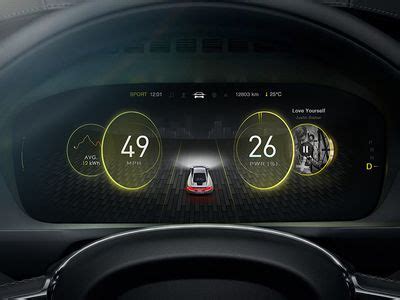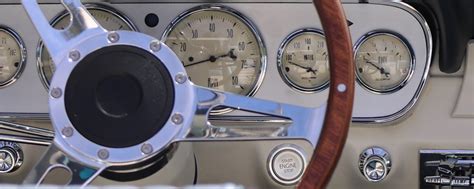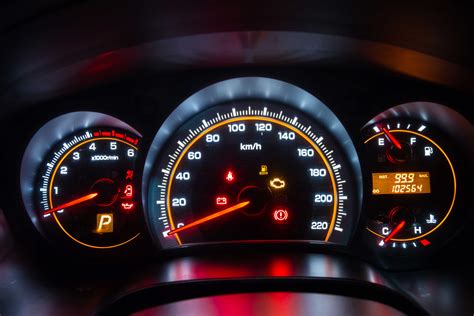Introduction to the Altium Instrument Dashboard
The Altium Instrument Dashboard is a powerful feature within Altium Designer that allows users to visualize and interact with various instruments and data sources. It provides a centralized location for monitoring and analyzing critical information related to your electronic design projects. In this article, we will explore how instruments are displayed on the Altium Instrument Dashboard and the benefits they offer to designers and engineers.
What is an Instrument in Altium Designer?
In Altium Designer, an instrument refers to a graphical representation of data or information related to your electronic design. Instruments can display a wide range of data, including:
- Schematic and PCB design metrics
- Component information and parameters
- Simulation results and waveforms
- Real-time data from connected hardware devices
- Project management and collaboration data
Instruments provide a visual and interactive way to access and analyze this data, enabling designers to make informed decisions and optimize their designs effectively.

Types of Instruments in the Altium Instrument Dashboard
The Altium Instrument Dashboard supports various types of instruments, each designed to display specific kinds of data. Some of the common instrument types include:
1. Schematic and PCB Design Instruments
These instruments focus on displaying information related to your schematic and PCB designs. They can show metrics such as:
- Component count and density
- Net and pin counts
- Design rule violations
- Layer stack-up information
- Board dimensions and area
Schematic and PCB design instruments help you assess the complexity and quality of your designs, identify potential issues, and make necessary improvements.
2. Component Information Instruments
Component information instruments provide detailed data about the components used in your designs. They can display:
- Component properties and parameters
- Datasheet information
- Availability and pricing data
- Manufacturer and supplier details
These instruments help you manage your component libraries, ensure the correct components are used, and facilitate procurement and supply chain management.
3. Simulation Result Instruments
Simulation result instruments allow you to visualize and analyze the results of your circuit simulations. They can display:
- Waveforms and plots
- Frequency response curves
- Stability analysis results
- Noise and distortion measurements
By using simulation result instruments, you can validate your designs, optimize performance, and identify potential issues before proceeding to physical prototyping.
4. Real-Time Data Instruments
Real-time data instruments enable you to monitor and interact with data from connected hardware devices. They can display:
- Sensor readings and measurements
- Control signals and outputs
- Communication bus data
- Debug information
These instruments facilitate the integration of hardware and software, allowing you to test and debug your designs in real-time and ensure proper functionality.
5. Project Management Instruments
Project management instruments provide insights into the progress and status of your design projects. They can display:
- Task lists and assignments
- Timelines and milestones
- Resource allocation and utilization
- Collaboration and communication data
By leveraging project management instruments, you can streamline your design process, ensure effective teamwork, and meet project deadlines.

Displaying Instruments on the Altium Instrument Dashboard
The Altium Instrument Dashboard provides a flexible and customizable environment for displaying and arranging instruments. Let’s explore how instruments are displayed on the dashboard.
1. Adding Instruments to the Dashboard
To add an instrument to the Altium Instrument Dashboard, follow these steps:
- Open the Altium Instrument Dashboard panel in Altium Designer.
- Click on the “Add Instrument” button or right-click on an empty area of the dashboard and select “Add Instrument” from the context menu.
- Choose the desired instrument type from the available options.
- Configure the instrument settings, such as data source, parameters, and display options.
- Click “OK” to add the instrument to the dashboard.
You can add multiple instruments to the dashboard, each displaying different types of data or information.
2. Arranging Instruments on the Dashboard
The Altium Instrument Dashboard allows you to arrange instruments in a grid-like layout. You can resize and reposition instruments to create a customized dashboard that suits your needs. To arrange instruments:
- Click and drag the edges of an instrument to resize it horizontally or vertically.
- Click and drag an instrument to reposition it on the dashboard.
- Use the snap-to-grid feature to align instruments neatly.
- Adjust the spacing between instruments using the grid settings.
By arranging instruments strategically, you can create a dashboard that provides a comprehensive overview of your design project and enables efficient monitoring and analysis.
3. Configuring Instrument Display Settings
Each instrument on the Altium Instrument Dashboard can be configured to display data in a specific way. The available display settings may vary depending on the instrument type, but common options include:
- Data range and scale
- Units and precision
- Color schemes and themes
- Labels and annotations
- Refresh rate and update frequency
By configuring the display settings, you can customize the appearance and behavior of each instrument to suit your preferences and requirements.
4. Interacting with Instruments
Instruments on the Altium Instrument Dashboard are interactive, allowing you to explore and analyze the displayed data. Common interactions include:
- Hovering over data points to view tooltips with additional information
- Clicking on data points or elements to access context-sensitive actions or details
- Zooming in or out to focus on specific data regions
- Panning or scrolling to navigate through large datasets
- Filtering or searching data based on specific criteria
These interactive features enable you to dive deeper into the data, identify trends and patterns, and make informed decisions based on the insights provided by the instruments.

Benefits of Using the Altium Instrument Dashboard
Using the Altium Instrument Dashboard offers several key benefits to designers and engineers:
-
Centralized Data Access: The dashboard provides a single, centralized location for accessing and visualizing all the critical data related to your electronic design projects. This eliminates the need to switch between multiple tools or panels, saving time and effort.
-
Real-Time Monitoring: With real-time data instruments, you can monitor the behavior and performance of your designs in real-time. This enables quick identification of issues, efficient debugging, and faster iteration cycles.
-
Improved Decision Making: The visual nature of instruments on the dashboard allows you to quickly grasp complex data and identify trends and patterns. This facilitates data-driven decision making, helping you make informed choices about your designs.
-
Enhanced Collaboration: The Altium Instrument Dashboard can be shared and accessed by multiple team members, fostering collaboration and knowledge sharing. It provides a common platform for discussing design aspects, tracking progress, and aligning efforts.
-
Customization and Flexibility: The ability to customize the dashboard layout, select relevant instruments, and configure display settings allows you to tailor the dashboard to your specific needs and preferences. This flexibility ensures that the dashboard aligns with your design workflow and priorities.
Frequently Asked Questions (FAQ)
-
Can I create custom instruments for the Altium Instrument Dashboard?
Yes, Altium Designer allows you to create custom instruments using scripting or programming languages. You can develop instruments that display data from external sources or perform specific calculations and visualizations. -
How can I share my Altium Instrument Dashboard with team members?
You can share your Altium Instrument Dashboard by exporting it as a file and distributing it to your team members. They can then import the dashboard into their own Altium Designer installations. Additionally, you can use Altium 365, a cloud-based platform, to collaborate and share dashboards in real-time. -
Can I export data from instruments on the dashboard?
Yes, most instruments on the Altium Instrument Dashboard allow you to export the displayed data in various formats, such as CSV, Excel, or image files. This enables further analysis, reporting, or integration with other tools. -
Are there any performance considerations when using the Altium Instrument Dashboard?
The performance of the Altium Instrument Dashboard depends on factors such as the complexity of your design, the number and type of instruments displayed, and the available system resources. It is recommended to optimize your dashboard by displaying only the necessary instruments and configuring appropriate refresh rates to ensure smooth performance. -
Can I access the Altium Instrument Dashboard remotely?
Yes, with Altium 365, you can access your Altium Instrument Dashboard remotely from any device with an internet connection. This allows you to monitor and interact with your design data even when you are away from your primary workstation.
Conclusion
The Altium Instrument Dashboard is a powerful tool that revolutionizes the way designers and engineers interact with their electronic design data. By displaying various instruments in a centralized and interactive manner, the dashboard enables efficient monitoring, analysis, and decision-making. Whether you are working on schematic and PCB designs, managing components, analyzing simulation results, or collaborating with team members, the Altium Instrument Dashboard provides a comprehensive and intuitive platform to streamline your design process and enhance productivity.
By leveraging the capabilities of the Altium Instrument Dashboard, you can gain valuable insights, identify potential issues early, and make informed decisions to optimize your electronic designs. The flexibility and customization options allow you to create a dashboard that aligns with your specific needs and preferences, ensuring a seamless integration into your design workflow.
As you explore the Altium Instrument Dashboard further, you will discover its potential to transform the way you approach electronic design. By harnessing the power of visual data representation and real-time monitoring, you can unlock new levels of efficiency, collaboration, and innovation in your design projects.
So, embrace the capabilities of the Altium Instrument Dashboard and take your electronic design process to the next level. With its intuitive interface, extensive instrument options, and interactive features, the dashboard will become an indispensable tool in your design arsenal, empowering you to create cutting-edge electronic products with confidence and precision.

No responses yet